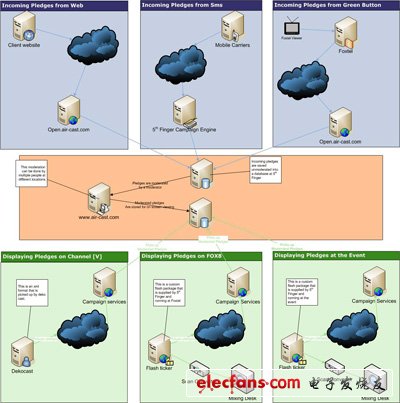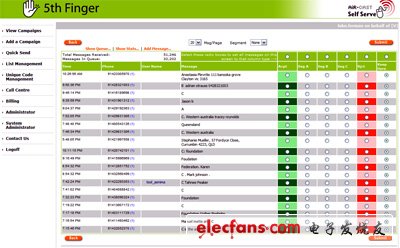With the rapid growth of mobile applications and user-generated content (UGC), the ability to publish mobile content such as SMS and MMS information to broadcast systems has become increasingly important-especially in the case of live broadcasts of TV shows and events .
In most cases, the purpose of the interaction between the mobile phone and the broadcasting system is to obtain some UGC and publish it to the broadcasting system, which is displayed on the large screen of the TV or the event site in an overlay mode (such as a band at the bottom of the screen). This type of UGC is a great way to promote user interaction. It shortens the distance between the organizer and the audience, and provides an interesting experience for the audience or event participants.
In Figure 1, a regular messaging engine is used to receive input from various sources (SMS, MMS, IVR, iTV, Web, etc.) and add a set of data-driven rules to the incoming "information" . The first is to receive content from users. Although it is also possible to adopt other methods mentioned above, this step is generally completed in the form of an SMS message.

Figure 1: The figure shows the integration points and information flow of an activity in multiple input formats and multiple output formats
Adjustment process
After receiving it from the user, the information will be placed in a database table, waiting in line for the regulator's approval, and then passed to the screen after passing the approval. When publishing user-generated mobile content to a broadcast network, this adjustment process determines whether the distribution can be successful. The main reasons are as follows:
Most broadcast networks require enough approved information to be released.
Timely content adjustment ensures that information can be displayed in the fastest time.
It is essential to comply with the principles of proper content.
You must confirm that all required information is relevant.

Figure 2: Screenshot of the online adjustment interface
Most studios are faced with strict space restrictions, which sometimes increases the difficulty of on-site adjustment, especially when the space where the event site is located is limited. In this case, you can use the Web browser to enter the mediation user interface in the information receiving and sending system for offline adjustment.
After the information is approved, the content can be published to the broadcast system in the following ways:
The graphics system retrieves the information in XML format via HTTP
In some graphics systems (such as DekoCast), you can call an external system by writing a module to retrieve the information that is still to be released. For example, 5th Finger ’s radio broadcast uses an API to return the current approved message queue. This XML file can be read into the graphics system and placed in a queue waiting to be displayed.
The API called in this example is called "CampaignChatData". The interface can retrieve chat information that exists in the queue in the form of XmlNode. By specifying different parameters, the CampaignChatData Web service can provide the following functions:
Retrieve all information or a specific amount of information in the queue
Retrieve all unread messages or a specific amount of information in the queue
Automatically delete information from the queue after retrieval
Automatically delete a specific message in the queue
Retrieve information in the order in which the information was adjusted or in reverse order (for example, the most recent modulation information will be returned first)
Retrieve the information adjusted since the last call
Hengstar professional CCTV monitors are designed for professional surveillance systems. The monitors have multi signal input options, and using BNC connectors, which can support long distance signal transmission. Its controller boards have functions of: low EMI, 3D filter and 3D noise reduction and professional Mstar ACE-3 image/color processing and, ensuring the monitors have a perfect image. We have different board solutions for various input needs, and monitors of small size(10.4'') to big size(65'') for option. Our monitors support wall mount and desktop solutions, other mounting solutions are customizable according to customer's requirements. This professional CCTV monitors have been widely applied to control centers, stations, banks, medical diagnose and other site monitoring fields.
Cctv Monitor,Cctv Monitor Screen,Cctv Camera Monitor,Small Cctv Monitor
Shenzhen Hengstar Technology Co., Ltd. , https://www.angeltondal.com